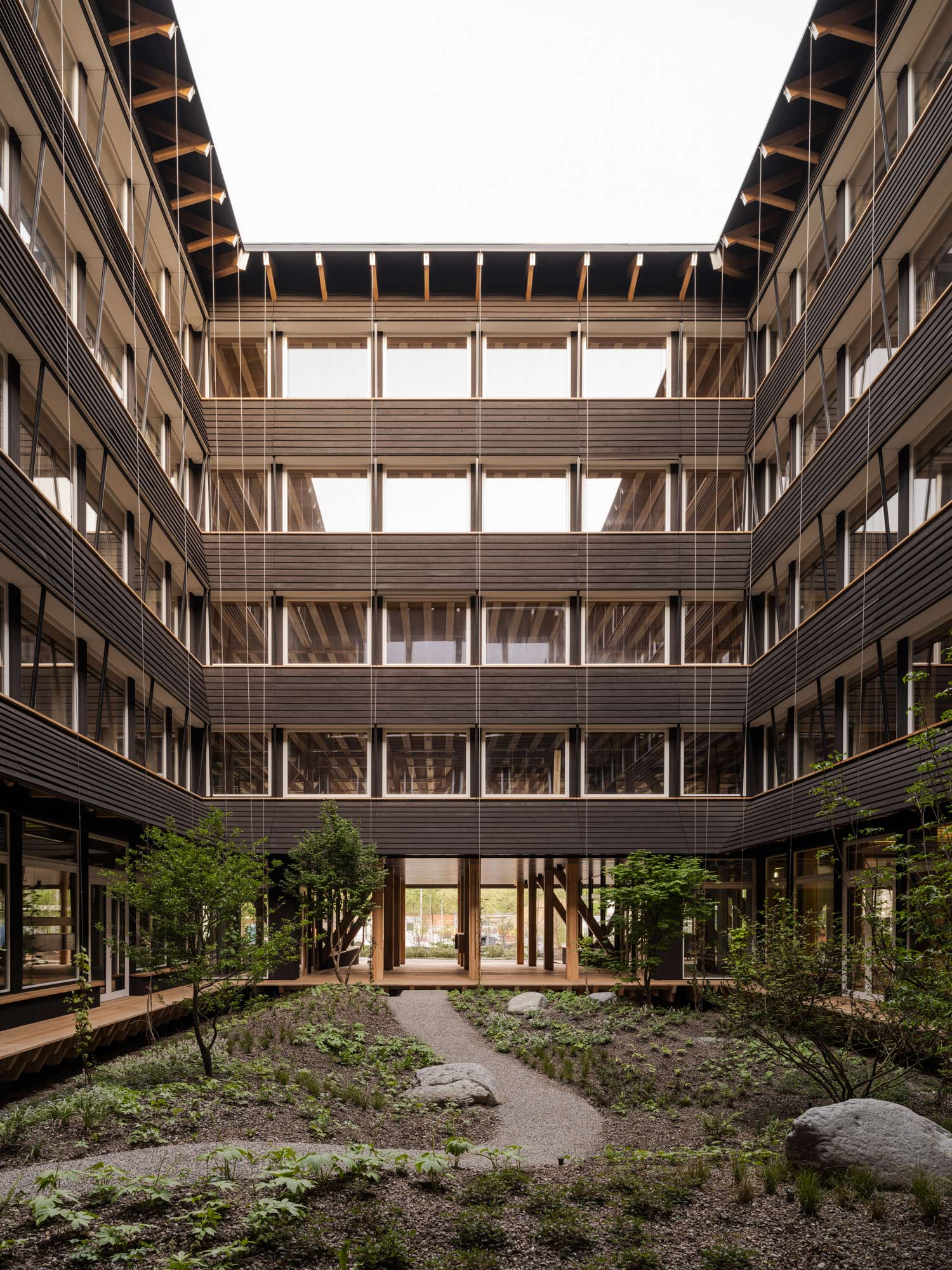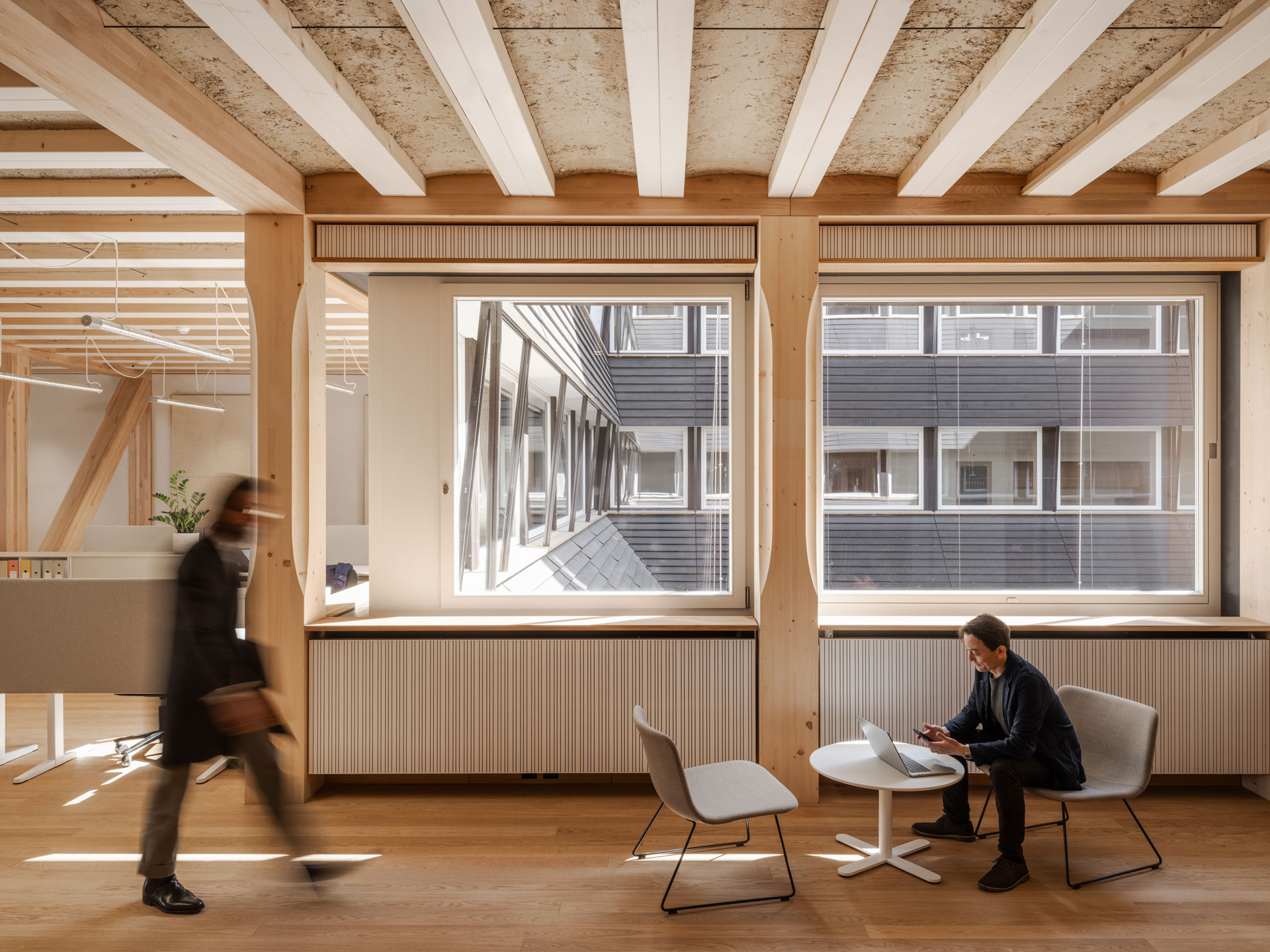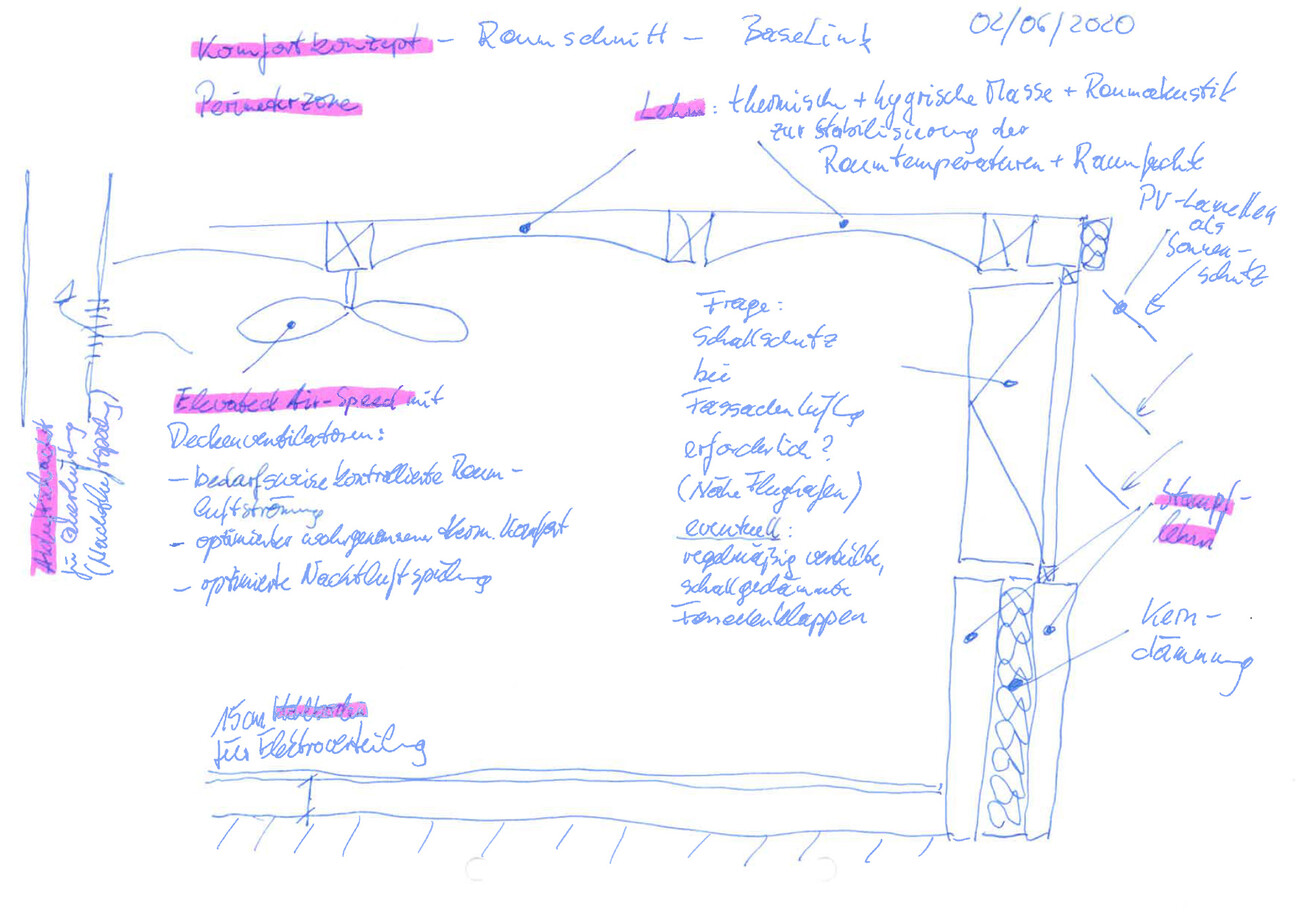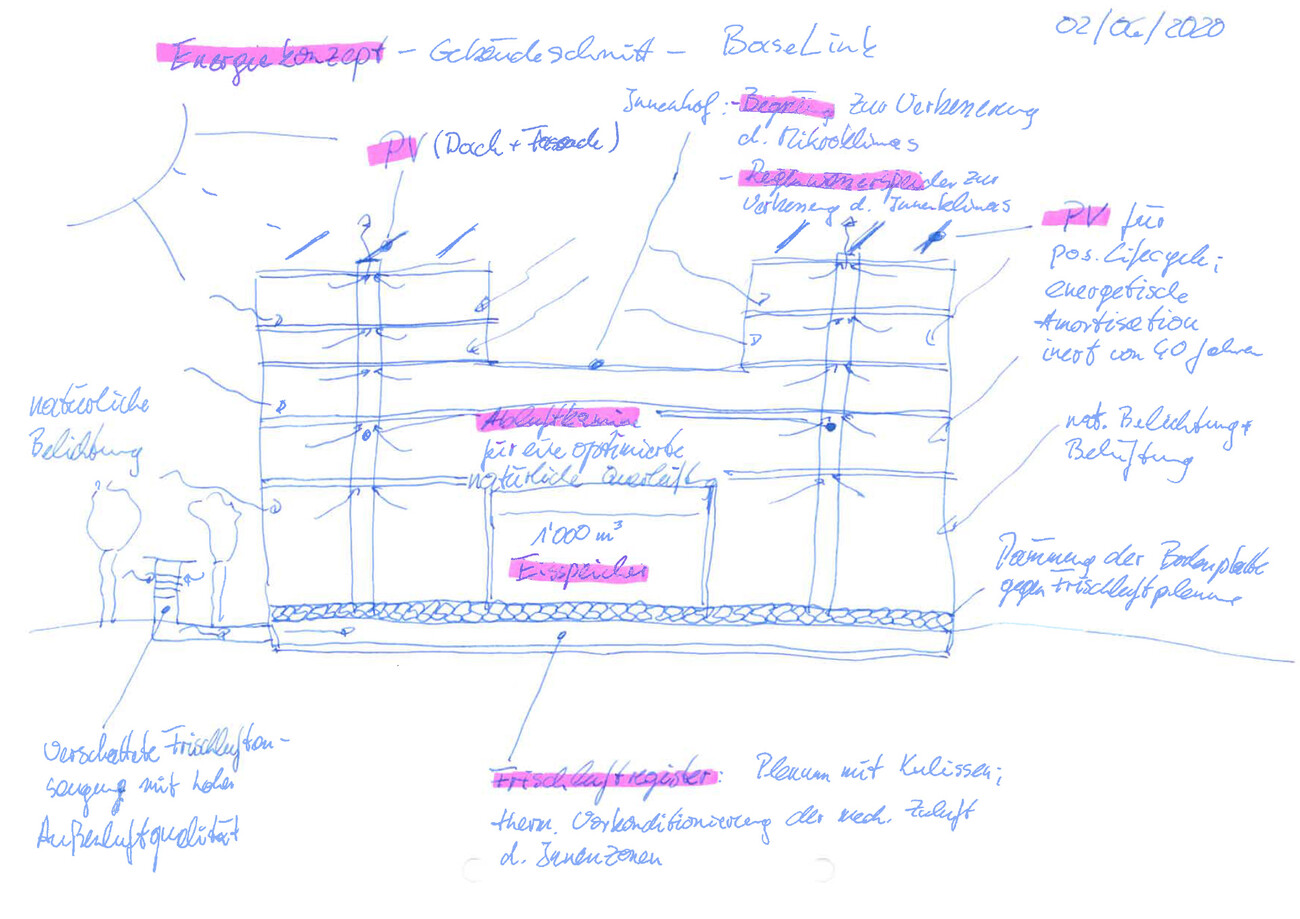'Hortus' Switzerland Innovation Park Basel Area Main Campus, Allschwil, Suisse
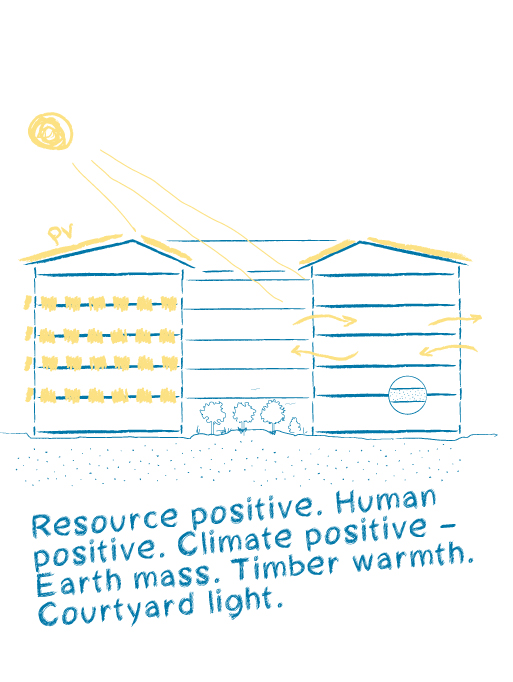
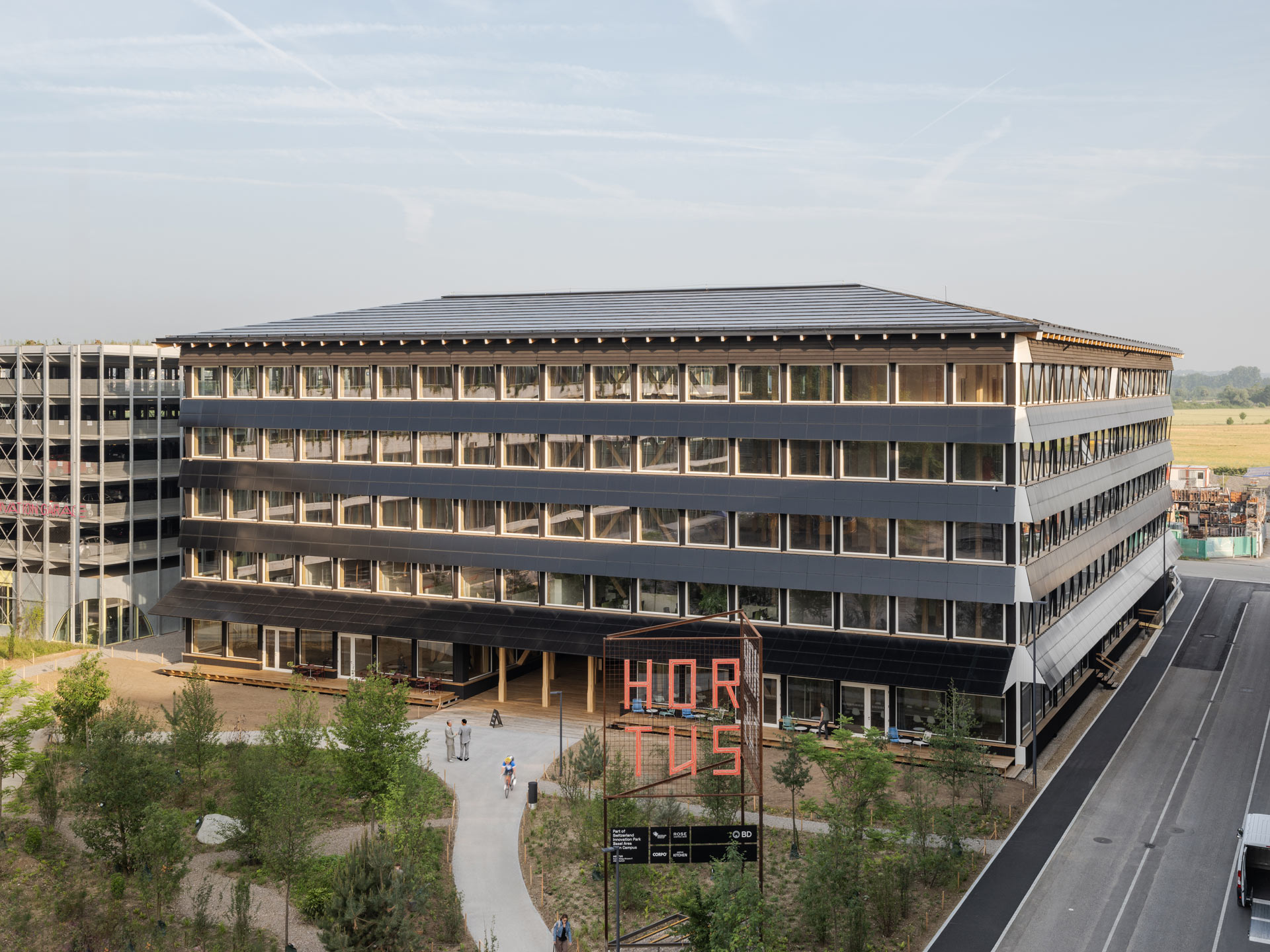
On behalf of SENN Resources AG, Herzog & de Meuron prepared a project study for an investment property intended for mixed commercial and office use in the ‘Switzerland Innovation Park Basel Area Main Campus’ development area in Allschwil (Canton of Basel-Landschaft). The client's guiding principle for the design is to “create a bold and robust building that is outstanding in every respect.” This involves a structural and energy concept that makes the building energy-positive. This means that the total construction mortgage in terms of gray energy and CO2 must be reduced to zero within a maximum of 40 years, taking into account the building's operating energy. The “positive lifecycle” as a general requirement goes beyond pure energy and ecological cyclical considerations to include other aspects such as comfort.
In addition, the focus is on “archaic,” energetically sensible materials with a raw aesthetic, such as wood or clay, with a reduced proportion of glass in the building envelope. Maximum material transparency is desired, achieved through the systematic, visible separation of primary and secondary structures. Another planning goal was to create affordable rental space.
The House of Research, Technology, Utopia and Sustainability – HORTUS for short – has been in operation since June 2025. Since then, the building has been generating more energy than it needs and will pay back its gray construction energy within a generation (~30 years). To achieve this, interdisciplinary teams developed special components, such as wood-clay ceiling and wall elements. These were prefabricated on site in a field factory, made from locally sourced materials. Wood, clay, and waste paper, as well as the absence of a basement, minimize the energy used in construction. Photovoltaics on the roof and facade, covering a total area of 5,000 m², supply around 800,000 kWh of electricity annually.
HORTUS is committed to the circular economy. Each component has a defined future even before it is installed, with instructions for reuse should the building one day no longer be needed. Thanks to natural materials and a garden in the inner courtyard, the building offers a pleasant indoor climate and an exemplary working atmosphere.
Transsolar provided consulting services and analyzed various energy comfort concepts for the project. This included investigations into the influence of different ventilation strategies on room temperature and cooling requirements, variants in heating and cooling solutions, and considerations of the CO2 footprint of the variants and solutions, including electricity input from photovoltaics. The analyses played a key role in the decision to include an inner courtyard in the building, which not only provides light but also maximizes the potential for natural ventilation.
A heat pump system with geothermal probes supplies district heating from the Main Campus energy center. Geothermal energy and ventilation also offer cooling options. Good thermal comfort is achieved by utilizing thermal building mass with night cooling, supported by controlled room air flow with the aid of ceiling fans. Only interior zones are mechanically ventilated in combination with surface cooling on the ceiling. This meant that a solution with ice storage was not necessary. The usable areas with direct facade access are ventilated via the facade. Cross ventilation via the central courtyard and the option of shaft ventilation for rooms with greater depth support the natural ventilation concept.
To ensure that the indoor climate is always maintained, even in such large office spaces, sensors have been built into the lamps to measure CO₂ levels, temperature, and humidity. If certain thresholds are reached, fresh air is automatically blown into the room from below the building. This is possible because HORTUS stands on stilts and makes sense because the air under the building is cooler than the ambient air in summer and warmer in winter.
The building's functionality is recorded with measurement data, which will be evaluated later.
